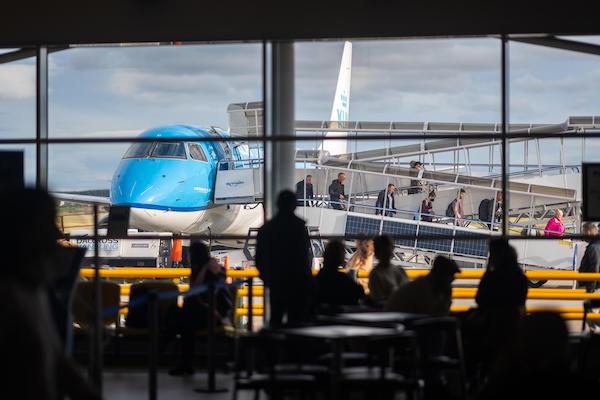European airports have reported a full recovery from the pandemic, outpacing pre-Covid passenger volumes by the first half of 2024. Latest data highlights a promising rebound for the sector.
Passenger Growth Outpaces Pre-Pandemic Figures
The latest data reveals that European airports have finally surpassed pre-pandemic passenger volumes with a 0.4% increase over the first half of 2019. Passenger numbers rose by 9% year-on-year, demonstrating the sector’s resilience and recovery post-Covid. International traffic, in particular, has been a key driver, growing at twice the rate of domestic traffic. This marks a significant recovery milestone for the industry.
Challenges Persist Despite Encouraging Growth
European airports are experiencing their busiest summer in terms of passenger traffic. However, Olivier Jankovec, Director General of ACI Europe, highlights ongoing challenges such as global IT outages, air traffic management capacity shortages, and aircraft delivery delays. These factors are impacting airport operations, but the focus remains on maintaining robust demand into the autumn.
Fragmentation in Traffic Performance
While overall passenger traffic has surpassed 2019 levels, there is significant fragmentation across European airports regarding traffic performance. Only 53% of airports have reached pre-pandemic levels. The growth is predominantly driven by leisure and VFR passengers, along with ultra-low-cost carriers and airlines like Turkish Airlines. This reflects the dynamic nature of aviation markets in Eastern Europe and Central Asia.
Economic Factors and Future Prospects
The outlook for European airports depends heavily on macroeconomic variables. Falling inflation and stable unemployment rates offer some optimism, yet decreases in industrial production and economic sentiment present challenges. Jankovec notes the importance of the effective implementation of the Schengen Entry Exit System (EES) to avoid potential disruptions. The readiness for these changes will be a crucial factor in the sector’s future performance.
Despite these challenges, the industry’s recovery narrative remains strong. The ability to adapt to structural changes in demand and supply, such as the rise of leisure travel and the prominence of low-cost carriers, will be critical for sustained growth.
Strategic Market Movements
Airports in Eastern Europe and Central Asia are experiencing substantial passenger growth, driven by geopolitical factors. This region’s aviation markets have shown remarkable dynamism, reflecting shifts in both supply and demand. ACI Europe continues to monitor these trends closely, emphasising the need to support airports in these regions as they navigate the complexities of the current economic landscape.
The role of leisure and Visiting Friends and Relatives (VFR) travel, along with the operations of low-cost carriers, continues to shape the traffic landscape. The sector’s ability to harness these trends will be pivotal in driving future growth.
Infrastructure and Operational Readiness
A focus on operational efficiency and infrastructure readiness will be indispensable as the sector navigates post-pandemic recovery. The impending implementation of the Schengen Entry Exit System (EES) is anticipated to challenge airports’ readiness across Europe. Successfully managing these operational demands will necessitate coordinated efforts between the authorities and airport operators.
Despite potential operational disruptions, the overall sentiment remains positive. With strategic planning and collaboration, airports are well-positioned to overcome these hurdles and sustain their recovery trajectory.
Conclusion
With the aviation sector showing promising recovery signs, European airports must remain vigilant and adaptive to maintain this momentum. While challenges continue to loom, including economic and operational uncertainties, the sector’s resilience and strategic foresight provide a strong foundation for future growth.
In light of the industry’s recovery, European airports face the task of navigating economic and operational challenges while capitalising on strategic opportunities for continued growth.

